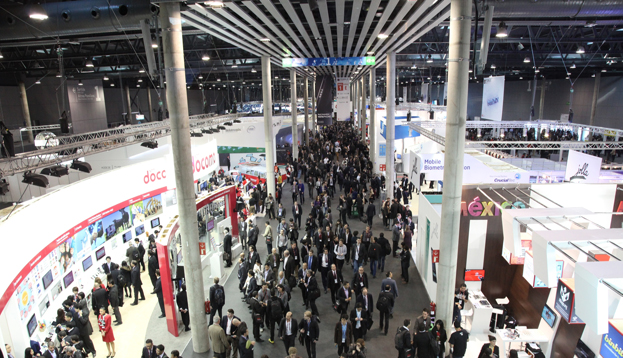In case you missed it while at GDC in San Francisco, across the pond, the Mobile World Congress was happening at the same time. It’s a gathering of the biggest mobile hardware makers in the world in Barcelona, Spain, where they show off their latest and greatest gadgets and talk trends and business.
The [a]listdaily has summarized the following take-aways from across the web from a marketer’s POV:
Mobile Marketers Choose To Focus On VR
“… this year saw an explosion of interest in virtual reality, which is more associated with the Game Developer Conference held concurrently in California. It almost felt like there was more VR stuff here at MWC than there was two months ago at CES, which includes a much broader range of technology products… VR’s explosion at MWC this year highlights where we’re at with mobile technology and technology in general. Smartphones are so pervasive, so common, that even major new device announcements from the largest companies in the world don’t engender the same excitement they might have a few years ago. Samsung will surely sell more Galaxy S6 smartphones this year than all of the VR headset makers combined have to date. But for lovers of technology, what’s more exciting: a new smartphone that’s just marginally better than last year’s model or an entirely new experience unlike anything before it Based on the buzz surrounding HTC’s Vive (which isn’t even a finished product), the answer to that question is clear.”
Mobile Marketing Moves From CPI To Brand Campaigns
“There is a resurgence of unique creative within mobile. With 2014’s trend of video having run its course, brands and agencies are looking to differentiate their branding on mobile platforms by using unique ad units that can be transacted using programmatic direct platforms, an emerging tool in the ad-tech space that integrates directly into the ad servers of the publishers to avoid fraudulent inventory. No longer is mobile marketing the “cost per install” market it was in the past. The big pivot in the ad-tech space is the rapid pace that brand dollars are now entering the ecosystem. Using the same strategy to drive a $1 install of a game is very different than trying to influence the purchase of a $90,000 car. This gap will undoubtedly lead to massive change in the coming years as traditional ad units and technology will be replaced by new companies, platforms and new activation-based marketing techniques powered by technologies like Bluetooth and innovative devices such as wearables.”
How A Chinese Smartwatch Became The Surprise Hit Of The Show
“The Huawei Watch has turned heads, if nothing else, which could have a knock-on effect for the company’s phones. But even if Huawei’s efforts come to nothing, it’s notable that a company best known for routers and cell towers is even attempting to join the conversation around fashion and high-touch industrial design. Huawei would be one of the least likely US brand successes of all time, but as its Mobile World Congress presence shows, wearable technology is new enough to be anyone’s game.”
Some Thoughts…
While it’s no news that telecoms and mobile in particular, have become one of the biggest industries in the world, mobile is just emerging as an advertising and branding medium. It’s also interesting to note that there is still so much opportunity for innovation and not just in terms of products and services.
Looking at what’s going on in Silicon Valley and where VC investment is going, we should be see the next wave of mobile innovation also happen an an organizational and systems level. The “sharing” economy that is powering new services such as AirBnB and Uber is yet to come to the mobile world and with that we’ll probably see a lot of new brands emerging as access to the Internet via mobile is becoming a utlity.
Infrastructure blog CircleID points to Tim Höttges, the CEO of Deutsche Telekom, who indicated that from a technology perspective this means that what we will see is: softwarization, virtualization, convergence (of infrastructure) and data analytics (connecting different value chains). CircleID also adds gamification to this, for educational purposes.
“The end result for customers will have to be that use of services, applications and devices is effortless,” he says.
With all this going on, the mobile space will be one for marketers to follow closely this year, because these devices are now powerful enough and running on high-speed networks making everything from VR to big beautiful immersive branding campaigns to rival TV a reality for the masses.
Are you ready?

